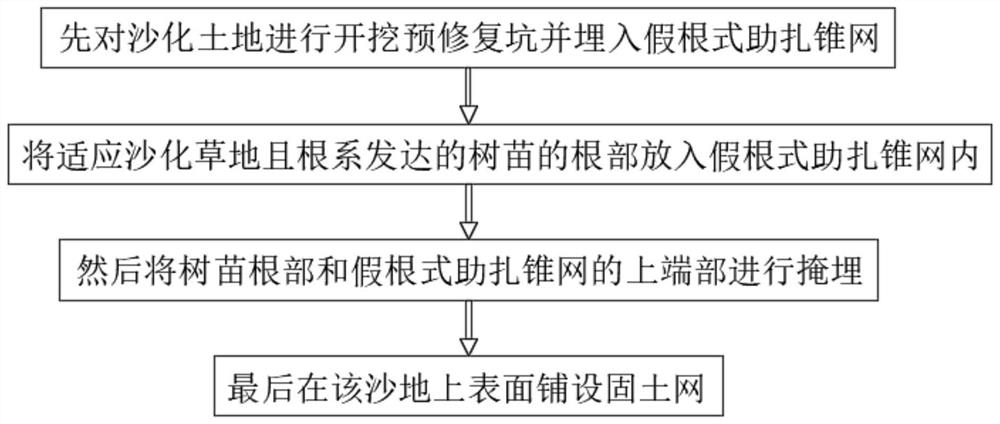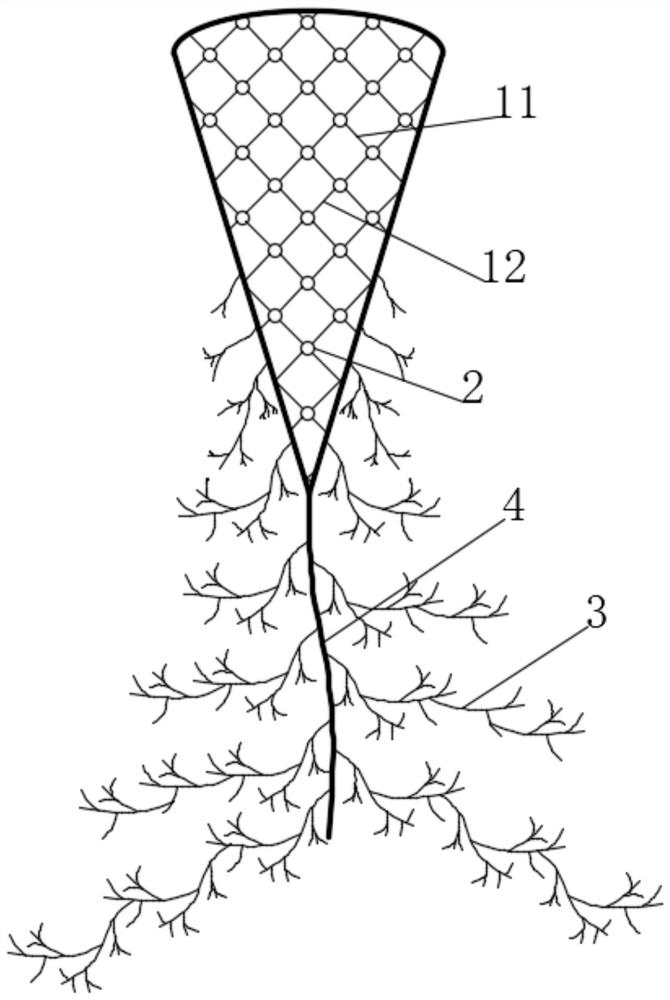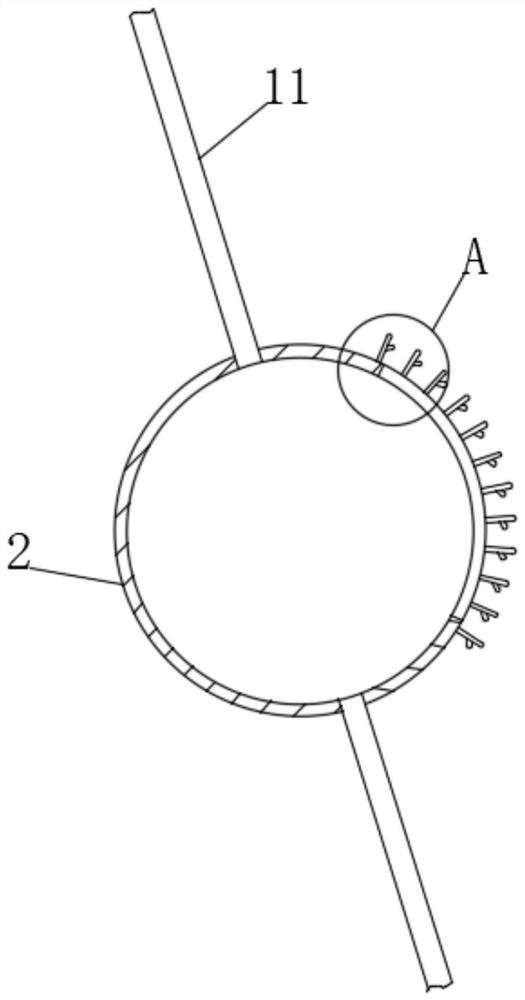A kind of sandy grassland restoration method
A remediation method and grassland technology, applied in the field of soil remediation, can solve the problems of weak cohesion, difficult root attachment, weak cohesion, etc., and achieve the effect of accelerating the restoration effect and efficiency, improving the adhesion strength, and improving the soil fixing effect.
- Summary
- Abstract
- Description
- Claims
- Application Information
AI Technical Summary
Problems solved by technology
Method used
Image
Examples
Embodiment 1
[0046] see figure 1 , a desertification grassland restoration method, comprising the following steps:
[0047] S1. First, excavate a pre-repair pit for the desertified grassland, and then bury the false root type cone-shaped net in the pre-repair pit;
[0048] S2. Put the roots of the saplings adapted to the developed root system of the desertified grassland into the pseudo-root type tie-up cone net, and then bury the sapling roots and the upper end of the pseudo-root type tie-up cone net, and then lay a soil-fixing net on the surface of the sandy ground;
[0049] S3. The root system of the sapling will first extend to the side wall of the false root-type tie-in cone net, thereby absorbing water and assisting the sapling to take root in the early stage of planting, thereby improving the survival rate;
[0050] S4. At the same time, the pseudo-root group on the pseudo-root-type tie-in cone will absorb the moisture in the deeper part of the sandy land and transport the moisture...
PUM
 Login to View More
Login to View More Abstract
Description
Claims
Application Information
 Login to View More
Login to View More - R&D
- Intellectual Property
- Life Sciences
- Materials
- Tech Scout
- Unparalleled Data Quality
- Higher Quality Content
- 60% Fewer Hallucinations
Browse by: Latest US Patents, China's latest patents, Technical Efficacy Thesaurus, Application Domain, Technology Topic, Popular Technical Reports.
© 2025 PatSnap. All rights reserved.Legal|Privacy policy|Modern Slavery Act Transparency Statement|Sitemap|About US| Contact US: help@patsnap.com



